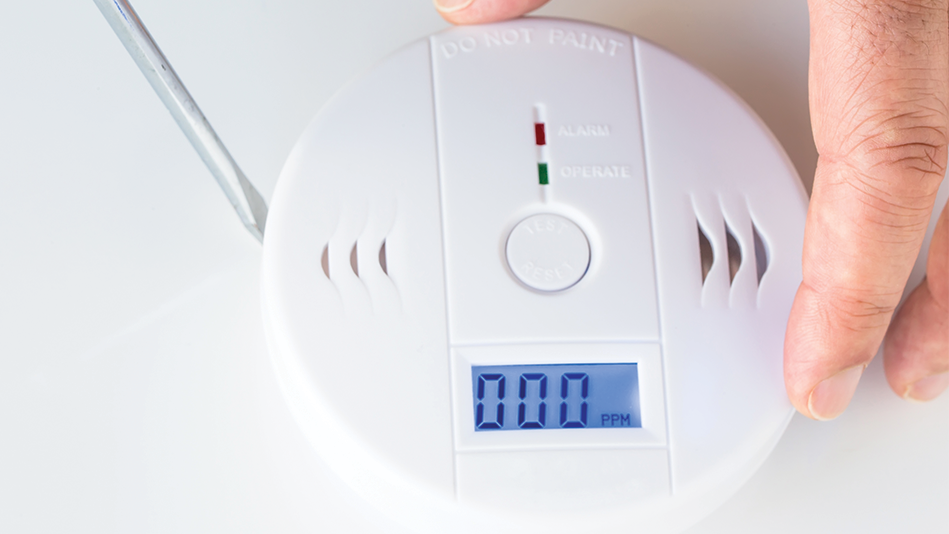Snow will begin to fall in a few weeks, and the weather will be prime for enjoying your gas fireplace. Before the holiday festivities begin, read on to make this winter your coziest one yet.
Gas fireplace safety
Before you even strike a match, there are a few things to keep in mind. Following these U.S. Fire Administration-aligned tips can help you enjoy your fire safely.
Test your carbon monoxide detector
Using a gas fireplace can generate carbon monoxide, so make sure there is a functional carbon monoxide detector in the same room. Ventilation is important (especially for larger fireplaces), so be sure the windows and doors in that space can be opened easily.

Clean your chimney
Maintaining a clean chimney is another big factor in ventilation and airflow. Keeping your chimney free and clear ensures that smoke will flow out of your home (instead of through it), and it also reduces the risk of carbon monoxide poisoning, eye and skin irritation, and chimney fires.
Getting your chimney inspected at least once a year helps to make sure everything is in working order, and if you experience any issues with your gas fireplace, the inspection can help you rule your chimney out.
Keep children and flammables away
A mesh screen may not block all flying embers, and glass panels can reach temperatures of hundreds of degrees above boiling, which can cause severe burns! Make sure that small children, pets, and any flammable materials are at least 3 feet from your fireplace at all times. Make a fire plan for your household so you know what to do if the fire ever gets out of control.

Control panel, key valve or switch?
Now that you’ve got safety covered, it's time to find the gas fireplace directions that apply to you. Many gas fireplaces turn on with a control panel, a key valve, or an electric switch.
Control panel instructions
Control panels typically have a control dial and a red pilot knob.
- Remove/detach the screen or cover.
- Turn the pilot knob to the “pilot” setting.
- Press the pilot knob in once per second, until it lights.
- Once it lights, hold it down for roughly 20 seconds to ensure it stays lit before releasing.
- If the light continues to stay lit, adjust the control dial to make the fire your desired size.
- Replace/reattach the screen or cover.
Key valve directions
Key valves are connected to a slot typically found immediately near the fireplace. Remove its cover and put the key inside. The key that fits the valve controls the amount of gas flow.
- Locate the burner for your fireplace. Light a long lighter or match next to it and pull the fuel trigger.
- Put the key in the slot, and slowly open the gas valve, which should immediately light the pilot. You may be able to hear the hiss of gas.
- Remove the key from the slot, and put the cover back on.
- To change the force of the fire, put the key back in the slot and adjust as needed.
The ease of an electric fireplace
If you have an electric fireplace, turning yours on may be as simple as hitting the connected switch. If that doesn’t seem to do the trick, you may have to turn on the pilot, as described above. Have your gas fireplace professionally inspected at least once a year to make sure it’s ready when you need it.
Turning it off
Conclude your fire session by hitting the switch, turning the key all the way down in the slot, or turning the control dial down to zero to put the fire out. If the fire doesn’t respond to the controls, it might be time to call a professional.
Pro Tip: It’s best to turn a gas fireplace off before you go to bed, but it is often safe and able to be used in the event of a power outage.
How do you like to relax by your fireplace? Visit us on Facebook or Instagram to tell us your thoughts!

